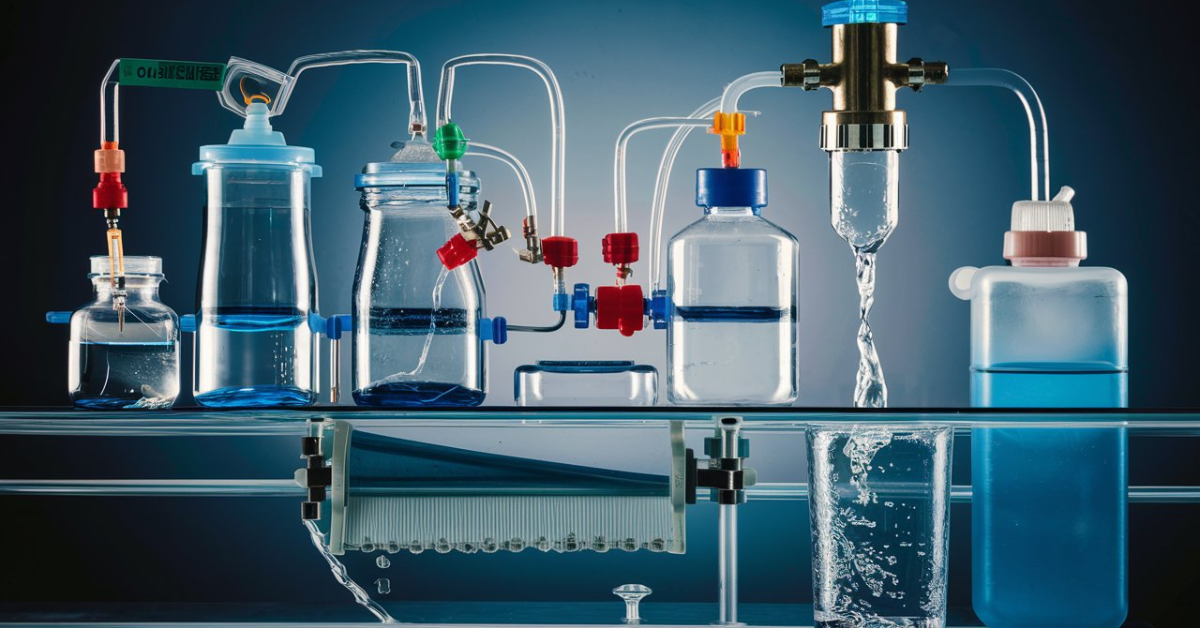Introduction of Water Treatment Chemicals
In today’s modern world, the quest for clean and safe water has become more critical than ever before. As populations grow and environmental pressures mount, ensuring access to pure water is paramount for human health, industrial processes, and environmental sustainability. One of the key technologies at the forefront of water purification is reverse osmosis (RO), a process that utilizes semi-permeable membranes and specialized chemicals to remove contaminants from water. In this comprehensive guide, we will explore the fascinating world of reverse osmosis water treatment chemicals, delving into their role, importance, and impact on water quality and safety.
Unlocking the Science of Reverse Osmosis
Reverse osmosis is a sophisticated water treatment process that harnesses the principles of osmosis in reverse to purify water. Osmosis is a natural process where solvent molecules, such as water, move from an area of lower solute concentration to an area of higher solute concentration through a semi-permeable membrane. Reverse osmosis reverses this natural flow by applying external pressure to the contaminated water, forcing it through a semi-permeable membrane. This process effectively removes impurities, including dissolved solids, bacteria, and other contaminants, leaving behind clean, potable water.
The Role of Reverse Osmosis Water Treatment Chemicals
At the heart of reverse osmosis systems are specialized chemicals that play crucial roles in enhancing the efficiency and effectiveness of the purification process. These chemicals are carefully selected and dosed to optimize water quality, prevent membrane fouling, and ensure the longevity of the RO system. From disinfectants to scale inhibitors, each chemical serves a specific function in achieving high-quality water output. Understanding the chemistry behind reverse osmosis chemicals is essential for maximizing the performance and reliability of water treatment systems.
The Chemistry Behind Reverse Osmosis
Reverse osmosis involves both physical filtration and chemical interactions to remove contaminants from water. The semi-permeable membrane acts as a barrier, allowing only water molecules to pass through while trapping impurities. In addition to the membrane, specialized chemicals are used to enhance the purification process. Disinfectants such as chlorine or ozone kill bacteria and viruses, ensuring the safety of the treated water. Antiscalants prevent the buildup of scale on the membrane surface, which can reduce efficiency and increase maintenance costs. pH adjusters help maintain the optimal pH range for membrane performance, while membrane cleaners remove deposits and fouling to prolong membrane life.
Understanding the Importance of Reverse Osmosis Chemicals
The use of reverse osmosis chemicals is essential for achieving the high purity standards required for various applications, including drinking water production, industrial processes, and pharmaceutical manufacturing. These chemicals help to maintain the integrity of the RO system, prevent fouling and scaling, and ensure consistent water quality. By understanding the role and importance of reverse osmosis chemicals, water treatment professionals can optimize system performance, minimize operational costs, and deliver clean, safe water to consumers and industries alike.
Factors Influencing Chemical Selection
The selection of reverse osmosis chemicals depends on several factors, including the quality of the feed water, the type and condition of the membrane, and the desired purity standards. Water quality parameters such as hardness, alkalinity, and pH levels influence the choice of chemicals used for pretreatment and post-treatment. The compatibility of chemicals with membrane materials and other system components is also a critical consideration. Additionally, environmental factors and regulatory requirements may dictate the use of specific chemicals or alternative treatment approaches to minimize environmental impact.
Optimizing Reverse Osmosis Performance
Achieving optimal performance in reverse osmosis systems requires careful control and optimization of chemical dosages. Proper dosing ensures effective disinfection, scale inhibition, and pH control, while minimizing chemical waste and environmental impact. Regular monitoring of water quality parameters and system performance is essential for detecting any deviations from desired operating conditions and taking corrective actions promptly. Factors such as temperature, pressure, and flow rate can also impact chemical effectiveness and system efficiency, underscoring the importance of maintaining stable operating conditions.
Environmental Impact and Sustainability
While reverse osmosis chemicals play a vital role in water treatment, their usage may pose environmental risks if not managed properly. Disinfectants and other chemicals can contribute to water pollution if they are discharged into the environment without proper treatment. Additionally, the production and disposal of chemicals may have energy and resource implications, further exacerbating environmental concerns. To mitigate these impacts, water treatment facilities must adopt eco-conscious practices, such as minimizing chemical usage, recycling and reusing chemicals where feasible, and exploring sustainable alternatives.
Safety Considerations and Regulatory Compliance
Ensuring the safe handling and storage of reverse osmosis chemicals is paramount to protect both personnel and the environment. Water treatment operators must adhere to strict safety protocols, including wearing appropriate personal protective equipment (PPE), implementing spill prevention measures, and conducting regular safety training and drills. Regulatory compliance is also essential, as water treatment facilities are subject to stringent regulations governing chemical usage, storage, and disposal. By complying with regulatory requirements and implementing robust safety practices, water treatment facilities can mitigate risks and ensure the safe and responsible use of reverse osmosis chemicals.
Conclusion of Water Treatment Chemicals
Reverse osmosis water treatment chemicals are indispensable tools in the quest for clean, safe water. By harnessing the power of chemistry, reverse osmosis systems can effectively remove contaminants and deliver high-quality water for various applications. However, the responsible use of chemicals is essential to minimize environmental impact, protect public health, and ensure regulatory compliance. By understanding the science behind reverse osmosis chemicals and adopting best practices in their usage, water treatment professionals can contribute to a more sustainable and resilient water supply for future generations.

